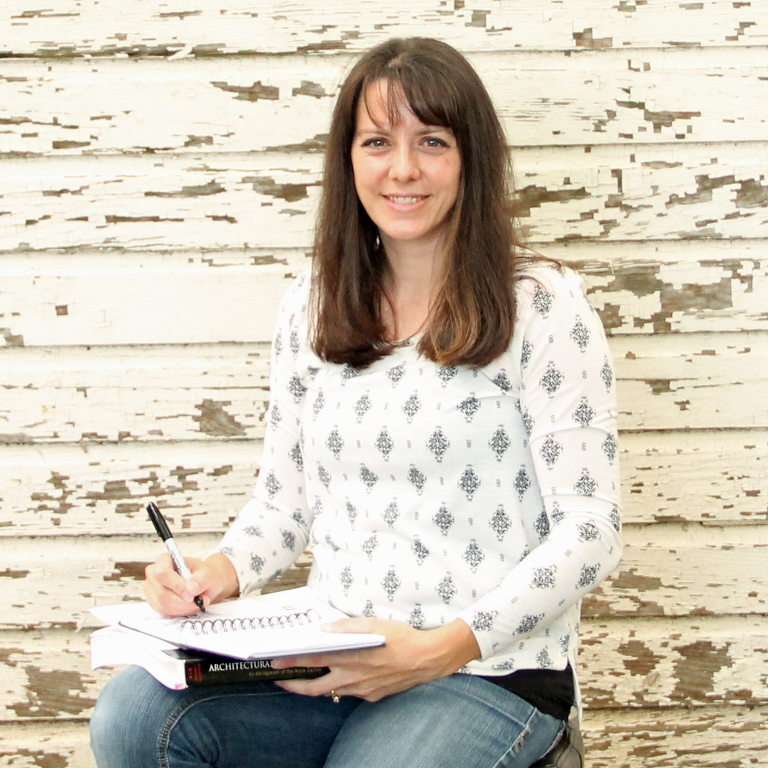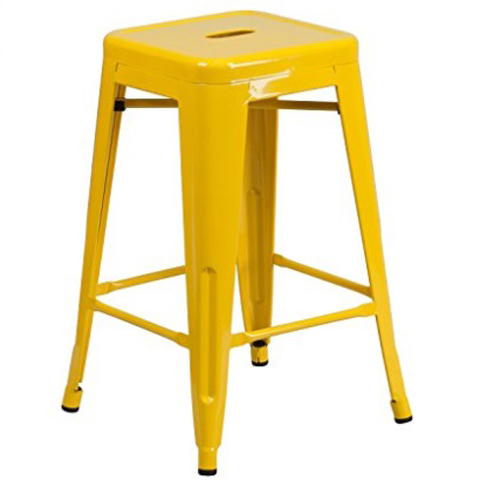Looking for an inspirational book to read? I might have just found the perfect one! This review of the book New Minimalism discusses the overarching topics and tips presented by the authors. All opinions are my own and I was not compensated in any way.
.png)
This post contains affiliate links. As an Amazon associate, I earn from qualifying purchases. See my full disclosure here
As part of my recent New Years goals, I am looking for inspiration. In particular, in regards to our family’s journey toward minimalism. I know it will be helpful to learn from others who have gone before us. By seeking out people who have been successful in a similar situation, we can be encouraged to continue on.
Right before Christmas break from school, I took our five children to the city library. It was my intention stock up a good supply of reading material to use during the cold days indoors. As we walked in, I noticed a small table set up with books about goal setting, organizing and intentional living. Within that grouping, I spotted the book The Life Changing Magic of Tidying Up by Marie Kondo. This book has been on my reading wish list for a while now. I quickly grabbed it and put it in the library bag.
Then, I saw another book. One I hadn’t heard of. The book was New Minimalism, written by a pair of friends – Cary Telander Fortin and Kyle Louise Quilici. The subtitle of the book drew me in. ‘Decluttering and Design for Sustainable, Intentional Living.’ Yes please! Into the bag it went.
.png)
AUTHOR BACKGROUND
Cary and Kyle met through carpooling. Both ladies were beginning their journeys toward a more simple lifestyle, and spent their drive time comparing notes. Through the following months, their friendship began to blossom. So too did their commitment to providing others with this newfound information they had regarding minimalism. Ultimately, the pair began a home organization business that grew into an online presence.
Their website newMinimalism has helped countless clients declutter and organize their lives. Simply put, these gals know what they are writing about. More important than that, they have a passion for their mission.
THE PREMISE OF THE BOOK NEW MINIMALISM
Right from the start of the book, the authors make it clear that they wish to dispel a common misconception about minimalism. That SIMPLICITY was synonymous with SACRIFICE and DISCOMFORT. Through their many years of experience working with people from all walks of life, they have found quite the opposite to be true.
By removing unused items from their lives, their clients have experienced peace and saved money. They have felt liberated and more joyful, and developed more meaningful relationships. I’d say those are all great reasons to embark on a more minimal life!
.png)
Throughout the book, the authors are encouraging their readers to look at the aspects of new minimalism as a way to understand your personal values. And, in turn, observing how those values are reflected in your physical space. They offer their clients a simple statement and question.
Your external space reflects your internal state. What does your home say about you?
THE FOUR ARCHETYPES
While working with a variety of personalities through their years as home organizers, Cary and Kyle have recognized four distinct patterns of behavior, or archetypes.
They are careful to note that these archetypes are not mutually exclusive. Rather, they are what people tend toward, depending on the situation. However, you are likely to find that one behavioral pattern is your personal default most of the time.
I found this section of the book particularly insightful and helpful. Understanding the habits that you tend toward will make it easier for you to more effectively minimize clutter in your life.
ARCHETYPE 1: CONNECTED
.png)
This person generally has a hard time letting go of personal items that have memories tied to them. They tend to be great listeners, reliable friends, and compassionate. The connected individual is highly sentimental.
Connected people have a hard time letting go of : gifts, handwritten cards, and souvenirs.
ARCHETYPE 2: PRACTICAL
.png)
Practical people are logical, data-driven, and methodical. They have a factual way of looking at the world. They find joy in finding creative ways to improve a scenario or solve a problem.
Practical people have a hard time letting go of: art + craft supplies, scrap materials, and anything that might be useful for a future situation.
ARCHETYPE 3: ENERGETIC
.png)
This person is creative and in a constant state of learning. A go-getter who has a hard time saying ‘no’ to a anyone who needs help. New projects are irresistible to them.
Energetic people have a hard time letting go of: projects, personal and social commitments.
ARCHETYPE 4: FRUGAL
.png)
This person tends to plan for the future, while rooted in the present moment. Frugal people tend to be very intentional about not only how they spend their money, but also their time.
Frugal people have a hard time letting go of: anything with monetary worth or perceived rarity.
This particular part of the book was very eye opening for me. I immediately knew that I fit the Energetic Archetype perfectly. I am often eager to start a new project, but will admit that following through is sometimes difficult. There is just something in me that loves the thrill of the creative beginning of a project. The finishing of the project isn’t as exciting. To be honest, often times by that point in the process, I am already looking toward the next new thing that can be started.
The second archetype that I align with is Practical. Because I love starting up new projects, I like to have supplies readily available. This is why my craft room is a giant mess, and in need of a major declutter.
I read the above descriptions to my husband, and he claims to most relate to both the Practical and Frugal archetypes. Absolutley, I agree.
The authors do a wonderful job of providing questions you can ask yourself while you are decluttering and minimizing, based on what behaviors you tend toward. By knowing your archetype, I truly believe you will understand how better to simplify your life.
THE DECLUTTERING PROCESS
The authors of New Minimalism offer a process of decluttering your spaces. Similar to the KonMari method of decluttering, this book recommends that items be dealt with by category. Seven specific categories are outlined. In addition, they recommend that items be dealt with in a specific order. They always start client decluttering sessions with clothing and end with furniture and home decor.
.png)
Their reason for the particular order is outlined in the book. Each category is given a section of the book, full of tips and best practices.
The authors also discuss how to be successful in the overall decluttering process. They offer encouragement on preparing, both mentally and physically, for the task at hand and include tips on how to enlist help.
CLEANING PRODUCT SOLUTIONS
Through their years in the industry, Cary and Kyle have encountered a wide variety of cleaning products. What they have come to find is that simple products are often the best. As a result, they have developed their very own formulas. Recipes for homemade wood polish, shower + toilet scrub, and an all purpose cleaner are all available in the book.
I definitely want to make the switch to a more natural way of cleaning, and will be giving these recipes a try! It would be amazing if I could make my cleaning routine at Arrow Hill Cottage toxic free!
NEW MINIMALISM DESIGN PRINCIPLES
This book offers up twelve design principles to think about when putting your new decluttered space back together. I won’t be writing them all here, but I do want to share the two that I love most.
The first is that we should redefine our definition of ‘full’. New Minimalism defines ‘full’ as a state when the confines of a drawer, cabinet, or closet have ample space to be seen and can be accessed with ease. Be mindful that when you overfill your spaces, items will be easily forgotten and, therefore, not useful. For example, I witnessed this firsthand when decluttering our linen closet. It was shocking to me that a very personal and special item was hidden below piles of unused towels and blankets. Never again.
.png)
The second principle that I plan to practice is to ‘allow one to stand for many.’ In a nutshell, this principle is addressing meaningful keepsakes from our past. The authors challenge their readers to seek out pieces that represent special memories, instead of trying to save everything.
There is a wonderful quote in the book by decluttering expert Karen Kingston. She stated: “When you are surrounded by more than 50 percent of belongings that remind you of something from your past, you will continue to live in the past.” That’s a powerful statement!
FINAL THOUGHTS ON THE BOOK NEW MINIMALISM
This book is a thorough approach to decluttering and simplifying your life. It is not your average organizing book. The fact that it offers holistic insights to the WHY behind the clutter makes it so much more. The authors are insightful and clear on their thoughts. However, they also recognize the dynamics of human nature.
I very much appreciate that the book isn’t laid out as a ‘one size fits all’ formula for each and every situation. We are all unique and, as such, our journeys toward minimalism will look different.
In conclusion, I most definitely recommend this book. It is one of the best I have read in this genre!
VIDEO BOOK REVIEW OF NEW MINIMALISM
Watch me talk about my thoughts on this book. I am planning on implementing what I have learned in my own life, and go into that more deeply in this video.
PIN THIS BOOK REVIEW
If you are considering a minimalism journey of your own, I highly recommend this book. Pin this image as a reminder to buy this book, or borrow it from the library. It will be worth your efforts, I promise!
Again, the book is New Minimalism, and can be purchased HERE.
.png)





This is so interesting! I think I’m all of the types, which makes sense as to why I struggle to get rid of stuff. But that’s my goal for 2019. Thanks for sharing!!
ha ha! all the types! 🙂 They do say in the book that you may tend toward different archetypes depending on the situation!
This is great! I’m going to check it out to look more into the archetypes… and then hope my husband reads it too.
the good thing is that even if he doesn’t read it… just knowing what his archetype is can be really helpful for you in understanding why he might have a hard time letting go of certain things. Similar to the ‘love languages’ I suppose!
Hope this comment isn’t duplicate, my first one disappeared. Thank you for bringing this book to my attention it looks very helpful!
you’re welcome! I hope you can check it out!
This looks so interesting! Thanks for reviewing!
This is so interesting. I am a practical. I have been keeping a ton of stuff in case guests need it. I just want to be prepared!
Yes! that is totally my husband too – we ‘might’ need that some day! The Archetypes were so eye opening for me. Like the Love Languages, it is interesting to know that we aren’t all the same in the reasons we hold onto things!
I am a total Connected Archetype! No wonder have such a hard time getting rid of things!
Isn’t the archetype info so interesting! ‘connected’ is the category that least affects me – but man oh man do I have the craft room clutter!
This is good. I’ve been trying to declutter with out too much success. I’m heading to the library today and will be looking for this book!
I hope your library has it! There are also some free book reading apps, such as Hoopla, where it might be available!
Sounds like a fantastic book! I’m intrigued and want to read, will be checking to see if my local library has it, thank you for the review!
absolutely! I am all about utilizing the library first!
I’m the Connected & Practical types 🙂 looking forward to reading the book , it’s on the way to my Kindle now ?
Awesome! I know you will love it!